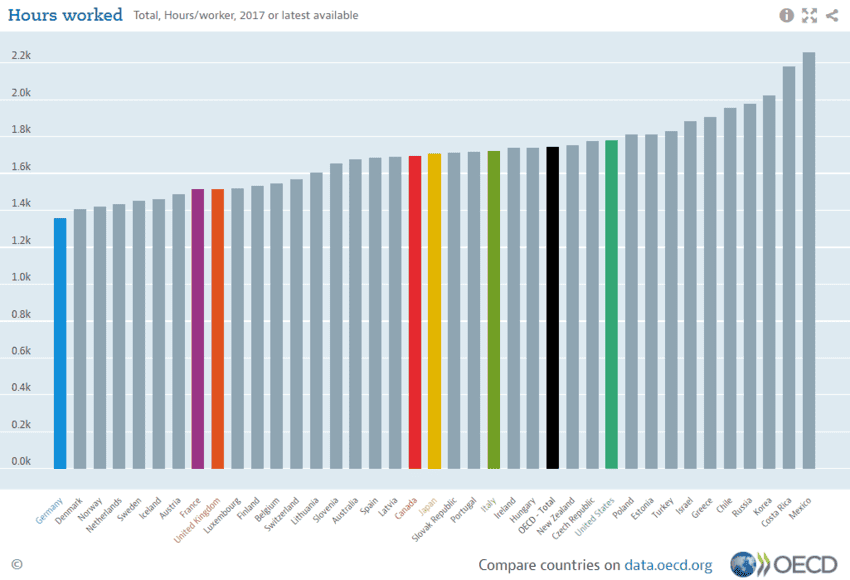Have you ever wondered where in the world do people work the least? And where in the world do people work the most? Well, don’t worry; we have the answers for you! So, as per the Organization for Economic Cooperation and Development (OECD); Mexico, Costa Rica and South Korea are at the top of the list of longest hours worked. Whereas, the fewest hours worked are in Germany, Denmark, and Norway.

How does this work? Well, the analysis takes the total number of hours that have been worked in a year and divides it by the average number of people that are employed. This includes the regular work hours of full-time, part-time, and even part-year workers, including paid and unpaid overtime and hours that are spent working in additional jobs.

Employees in Germany work an average of 1,356 hours in a year which about 900 hours per year less than employees working in Mexico. The OECD average for the United States stands at 1,780 whereas Japan has an average OECD of 1,710. In Germany, about 5% of employees say that they work ‘very long hours’ compared with an OCED average of 13%.

Although the difference in work hours can be explained mostly by social factors and cultural attitudes, it is also the policy that dictates the work hours. In South Korea, where workers work about 2,000 hours per year, made it into the news last year following its National Assembly voting to cut the maximum working week down to 52 hours from 68 hours.

Although the data does provide an insightful view into the various cultural and working practices, it lacks statistics such as output per hour worked and various other productivity measures. The OECD report has shown that the countries that are working the longest are not actually the most productive ones. The OECD said, ‘Social partners can and should play an important role in ensuring that the provision of training is consistent with current and future demand for skills. That includes achieving an equitable distribution of productivity gains and supporting individuals who lose their job as a result of technological change or trade.’

There’s also the debate about where output should matter more as opposed to the number of hours. A number of studies have proven that working fewer hours a week means the employees are actually happier and become more productive. Adam Grant, a psychologist from the Wharton School in Pennsylvania, said, ‘We have some good experiments showing that if you reduce work hours, people are able to focus their attention more effectively. They end up producing just as much, often with higher quality and creativity, and they are also more loyal to the organizations that are willing to give them the flexibility to care about their lives outside of work.’


